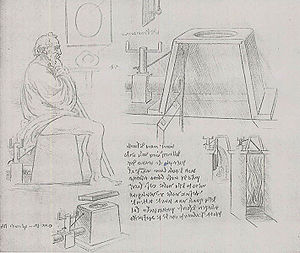Category:Valves
A valve is a mechanical device which regulate either the flow or the pressure of the fluid. Its function can be stopping or starting the flow, controlling flow rate, diverting flow, preventing back flow, controlling pressure, or relieving pressure.
Basically, the valve is an assembly of a body with connection to the pipe and some elements with a sealing functionality that are operated by an actuator. The valve can be also complemented whit several devices such as positioners, transductors, pressure regulators.
Since the Ancient times, the men knew how to regulate water, either with stones or branches and trunks from the trees. Egyptians, Greeks and other cultures were able to drive the water from rivers and fountains for public use or irrigation. But the Romans were the real developers of canal systems. They bring water form fountains and rivers to the villages, sometimes at long distances and saving important obstacles by means of aqueducts. The valves were plug or stopcock type, made in bronzeIt was rich in lead, no cracked, anti-corrosive, ductile, able to weld to the pipes of bronze or lead and good friction properties which facilitated the rotation of the plug. The parts of the valve were a body, a holed plug, a bottom, and a long levy for turning the plug.
At several Mediterranean towns were found small valves, all of them had similar design, such as in Rabat, Djemila, Istambul, Avarches, Augusta (where there was also found butterfly valves as taps) and Naples (were the plugs were cylindric).Romans used a primitive diaphragm valve, made of crude leather that was manually closed over a weir, to control flow and temperature of household bath water. There is also evidence of the use of angular valves, mixing valves and also check valves for avoiding back flow. During the Middle Ages there were not any very important designing progresses. It was during the Renaissance when the construction of canals, irrigation systems and other hydraulic works included more sophistificated valves. Leonardo Da Vinci left good samples in his sketches.
The modern history of the valve industry starts with the Industrial Revolution. At 1705 Thomas Newcomen invented the first steam machine. It needed valves able to keep and regulate the steam at high pressure. As new inventors as James Watt created new machines, they also improve the design of the valves. But it was until many years later when the production of valves was at great scale, independently of particular projects.
Pages in category "Valves"
The following 165 pages are in this category, out of 165 total.
A
B
C
D
F
G
I
M
P
- Paddle Valves
- Pharma Valves
- Pharmaceutical Valves
- Pinch Valves
- Pipe Fittings
- Piston Control Valves
- Plastic Valves
- Plate Valves
- Plug Valves
- Plunger Valves
- Pneumatic Conveying Diverters
- Pneumatic Conveying Slide Gates
- Pneumatic Valves
- Poppet Valves
- Powder Valves
- Pressure Limit Valves
- Pressure Relief Valves
- Pressure Seal Valves
R
S
- Safety Relief Valves
- Safety Valves
- Sampling Valves
- Sanitary Valves
- Scaling Diverter Valves
- Screw Valves
- Segment Valves
- Self Cleaning Rotary Valves
- Shut-Off Valves
- Shutting Gate Valves
- Side Entry Airlocks
- Silo Valves
- Slide Gate Valves
- Slide Gates
- Slide Valves
- Slurry Valves
- Solenoid Valves
- Solids Valves
- Spherical Valves
- Swing Check Valves
- Swing Gate Diverter Valves
- Swing Valves
